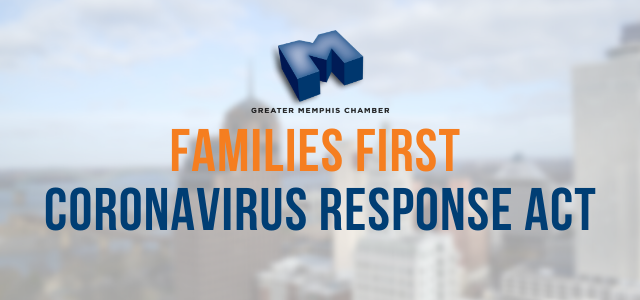
By Bass Berry and Sims on March 19, 2020
On Wednesday, March 18, 2020, President Trump signed the Families First Coronavirus Response Act into law. Employers’ obligations will become effective no later than April 2, 2020.
A summary of the employment-related provisions and answers to some frequently asked questions regarding the Act are provided below.
Emergency Paid Sick Leave Act
Employers must provide paid sick time to employees who are unable to work (or telework) for the following purposes through December 31, 2020:
- The employee is subject to a federal, state, or local quarantine order related to COVID-19.
- The employee has been advised by a healthcare provider to self-quarantine due to COVID-19 concerns.
- The employee is experiencing symptoms of COVID-19 and seeking a medical diagnosis.
- The employee is caring for an individual who is subject to an order described in (1) above or has been advised as described in (2) above.
- The employee is caring for a child if the school or place of care has been closed or the child-care provider of such child is unavailable due to COVID-19 precautions.
- The employee is experiencing any other substantially similar condition specified by the Secretary of Health and Human Services in consultation with the Secretary of the Treasury and the Secretary of Labor.
Who is a covered employee and employer under this Act?
Employers with less than 500 employees are generally covered. Employees may immediately begin using paid sick time for the purposes described in this section, regardless of how long the employee has been employed by the employer.
How much paid sick time are employees entitled to take?
Full-time employees are entitled to 80 hours of paid sick time, while part-time employees are entitled to the number of hours that the employee works on average over a two-week period. There is no carryover of this paid sick time from year to year. Employers cannot require employees to use other paid leave provided by the employer before allowing employees to use paid sick time.
Are there any notice requirements associated with this paid sick leave?
Yes, each employer must post in conspicuous places on the premises of the employer a notice to be prepared or approved by the Secretary of Labor. This notice will be prepared no later than seven days after the date of the enactment of this Act, and we will post a link to this notice on our website as soon as it is available.
How do I calculate paid sick time for my employees?
This paid sick time will be calculated based on the employee’s regular rate of pay and the number of hours the employee would otherwise normally be scheduled to work, not to exceed $511 per day and $5,110 in the aggregate for a use described in (1), (2), or (3) above.
For any use described in (4), (5), or (6) above, the employee’s required compensation is two-thirds of the employee’s regular rate of pay (or the applicable minimum wage rate, whichever is greater), not to exceed $200 per day and $2,000 in the aggregate per employee.
What if an employee does not have regular hours and the employee’s schedule changes frequently?
For an employee whose schedule varies from week to week, the employer should use a number equal to the average number of hours that the employee was scheduled per day over the six months ending on the date on which the employee takes such leave, including hours for which the employee took leave of any type or, if the employee did not work over such period, the employer should use the reasonable expectation of average number of hours to be worked per day by the employee at the time of hiring.
Do employees have to provide notice to the employer to take leave under this Act?
After the first workday (or portion thereof) that an employee receives paid sick time under the Act, an employer may require the employee to follow reasonable notice procedures to continue receiving paid sick time.
Emergency Family and Medical Leave Expansion Act
Employees may take FMLA leave (up to 12 weeks) because of a qualifying need related to a public health emergency concerning COVID-19 through December 31, 2020.
A qualifying need related to a public health emergency means that the employee is unable to work (or telework) due to a need for leave to care for a child under the age of 18 if the school or place of care has been closed or the child care provider of such child is unavailable, due to a public health emergency.
Who is a covered employee and employer under this Act?
This type of leave applies to employees who have been employed for at least 30 days by the employer and it covers employers who employ less than 500 employees. Employers of healthcare professionals and emergency responders may elect to exclude those employees from the provisions of this Act.
Does this FMLA leave due to a qualifying need related to a public health emergency have to be paid?
The first 10 days of leave may be unpaid. An employee may elect to substitute any accrued vacation, personal, or medical leave for unpaid leave, but employers cannot require employees to use other available paid leave during this time. Employers must provide paid leave for each day of leave taken beyond 10 days.
How do I calculate paid leave under this Act?
Paid FMLA leave is calculated based on an amount that is not less than two-thirds of an employee’s regular rate of pay for the number of hours the employee would otherwise normally be scheduled to work. Paid leave shall not exceed $200 per day and $10,000 in the aggregate per employee.
What if an employee does not have regular hours and the employee’s schedule changes frequently?
For an employee whose schedule varies from week to week, the employer should use a number equal to the average number of hours that the employee was scheduled per day over the six months ending on the date on which the employee takes such leave, including hours for which the employee took leave of any type or, if the employee did not work over such period, then the employer should use the reasonable expectation of average number of hours to be worked per day by the employee at the time of hiring.
Do employees have to provide notice to the employer to take leave under this Act?
If the need is foreseeable, an employee should provide the employer with as much notice of leave as is practicable.
Is my company exempt from any of the requirements described in this alert?
If an employer has less than 500 employees, the employer is likely covered by the requirements described in this alert. The Secretary of Labor also has the authority to issue regulations to exclude certain healthcare providers and emergency personnel as well as to exclude small businesses with fewer than 50 employees when the imposition of these requirements would jeopardize the viability of the business as a going concern.
Employer Tax Credit for Paid Sick Leave and Expanded FMLA
The Act provides for a payroll tax credit for the wages paid by employers for the paid sick leave and expanded FMLA leave described in this alert. These credits will be provided quarterly against an employer’s social security taxes.



